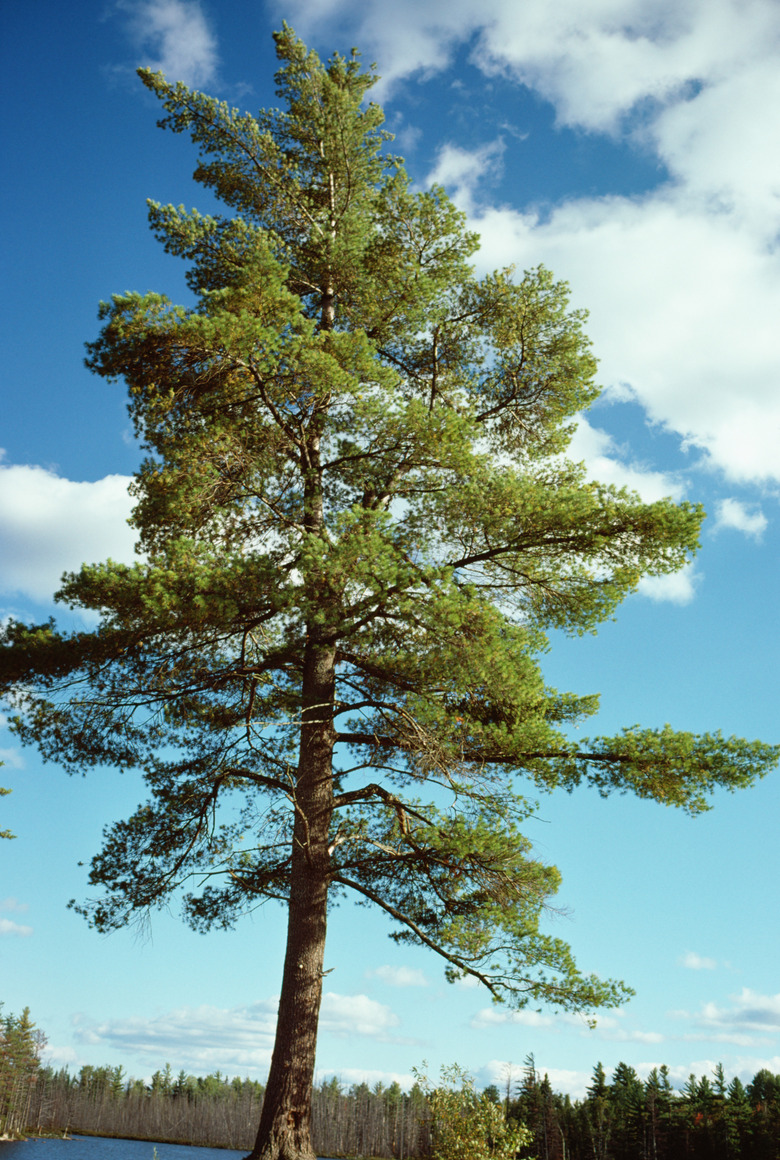Which Is Best: Rubberwood Or Pine?
It is difficult to compare rubberwood to pinewood because rubberwood is a hardwood imported as moderately priced indoor furniture, and pinewood is a native resinous softwood made into both interior and exterior furniture and is widely available to carpenters and cabinet-makers. The qualities of the two woods vary greatly. Which wood is best depends on your taste and whether you want ready-made furniture or wood for construction and cabinet-making.
Basic Difference
Basic Difference
The rubber tree (Hevea brasiliensis), also called parawood, Malaysian oak or white teak, is native to the Amazon basin but most of the low-end rubberwood furniture in the United States is made in China from trees grown in Malaysia and other Southeast Asian countries. You likely won't find rubberwood in a lumber yard. The major North American pine trees are white pine, sugar pine and yellow or southern pine. White pines and sugar pines grow in the northern states and Canada. Three species of yellow pines grow in the south, the loblolly, longleaf and shortleaf pines. The characteristics and quality of pinewood varies with the species and pinewood has numerous uses other than furniture.
Wood Description
Wood Description
Light-colored rubberwood is a hardwood with a coarse grain that is as dense as ash or maple. It is dried under pressure to prevent it from warping. Rubberwood furniture usually has glued finger-joints, so called because they resemble interlocking fingers. White pine is pale yellow to white and knotty. Shortleaf pine is white to reddish brown with medium-sized rings. Longleaf pine is hard, heavy, full of resin and has uniform, narrow rings. Yellowish to reddish-brown loblolly pine is hard and strong with broad rings. Pinewood with few knots or small knots is more expensive.
Uses
Uses
Rubberwood is made into furniture, cutting boards and toys. It does not weather well and it is not good for outdoor furniture. Widely available and relatively inexpensive white pine is used to make furniture, cabinets, floors and wall panels. White pine with small knots is often used to reproduce early American colonial furniture. Sugar pine, similar to yellow pine, is used for both interior and exterior construction as well as for boat decks and outdoor furniture. Southern pine is made is used for both exterior and interior building and to make cabinets and furniture for decks, children's rooms and vacation cabins.
Resin vs Latex
Resin vs Latex
After rubber trees stop producing the milky sap or latex that is made into rubber they are harvested for rubberwood and the trees are replanted. That happens when the trees are about 30 years old. The resin that pine trees yield is not the same as the sap or latex that rubber trees exude. The phloem cells of a rubber tree transports sugary sap as a nutrient. Resin, used to make turpentine, heals wounds in the tree and gives pinewood its characteristic "piney" odor. Resin will often gum up saws and other woodworking tools. The latex, produced on the exterior of the rubber tree, does not affect woodworking qualities.
